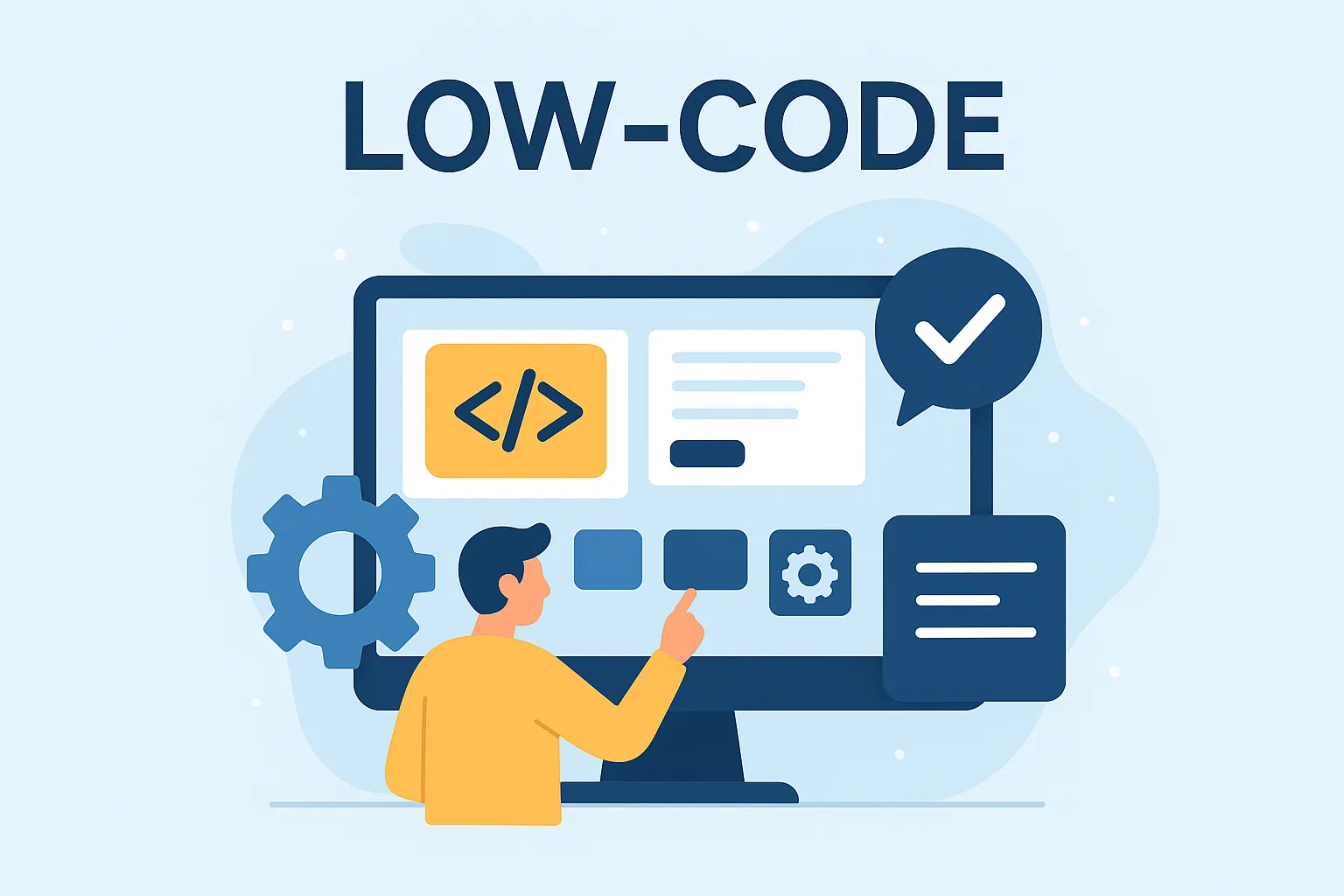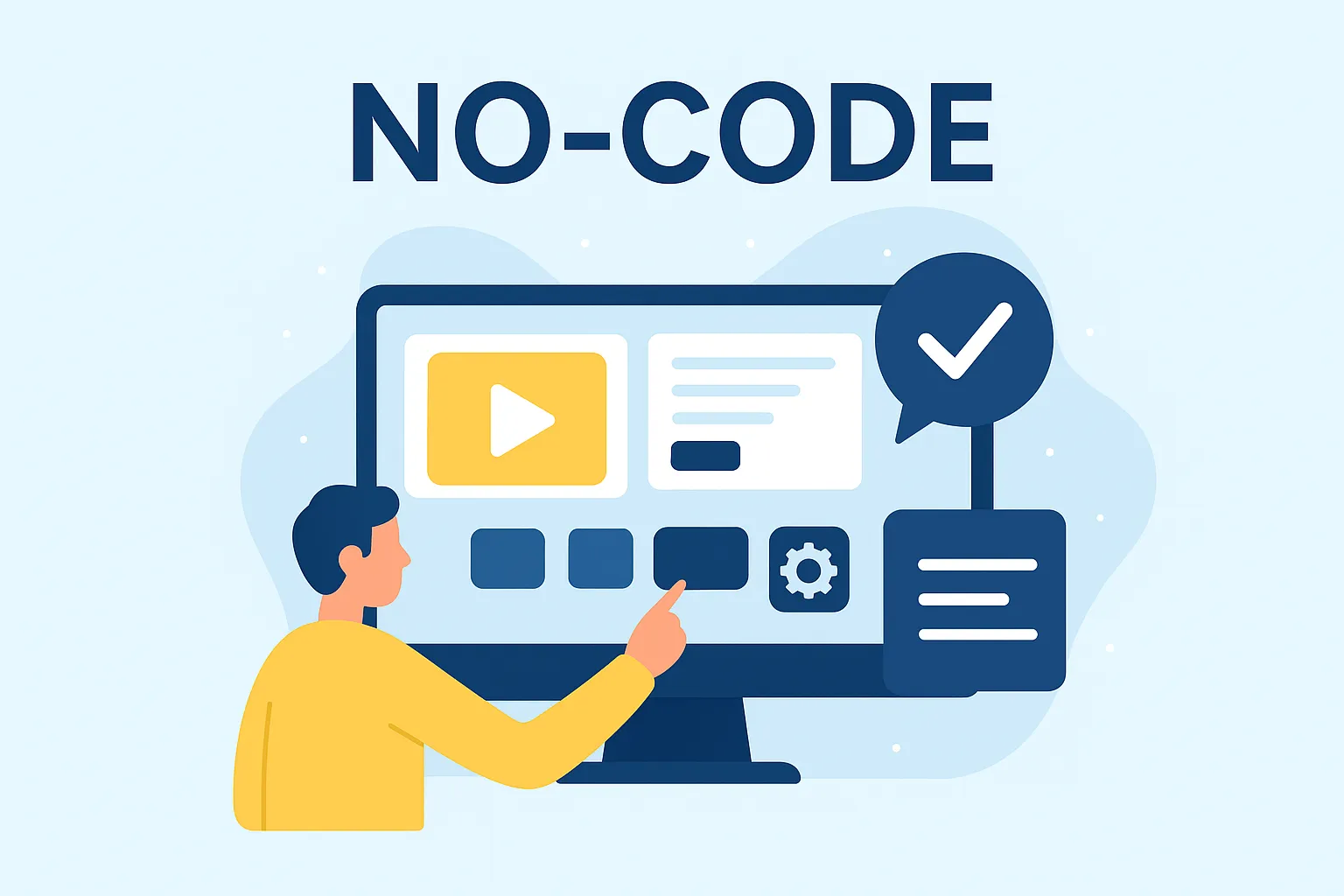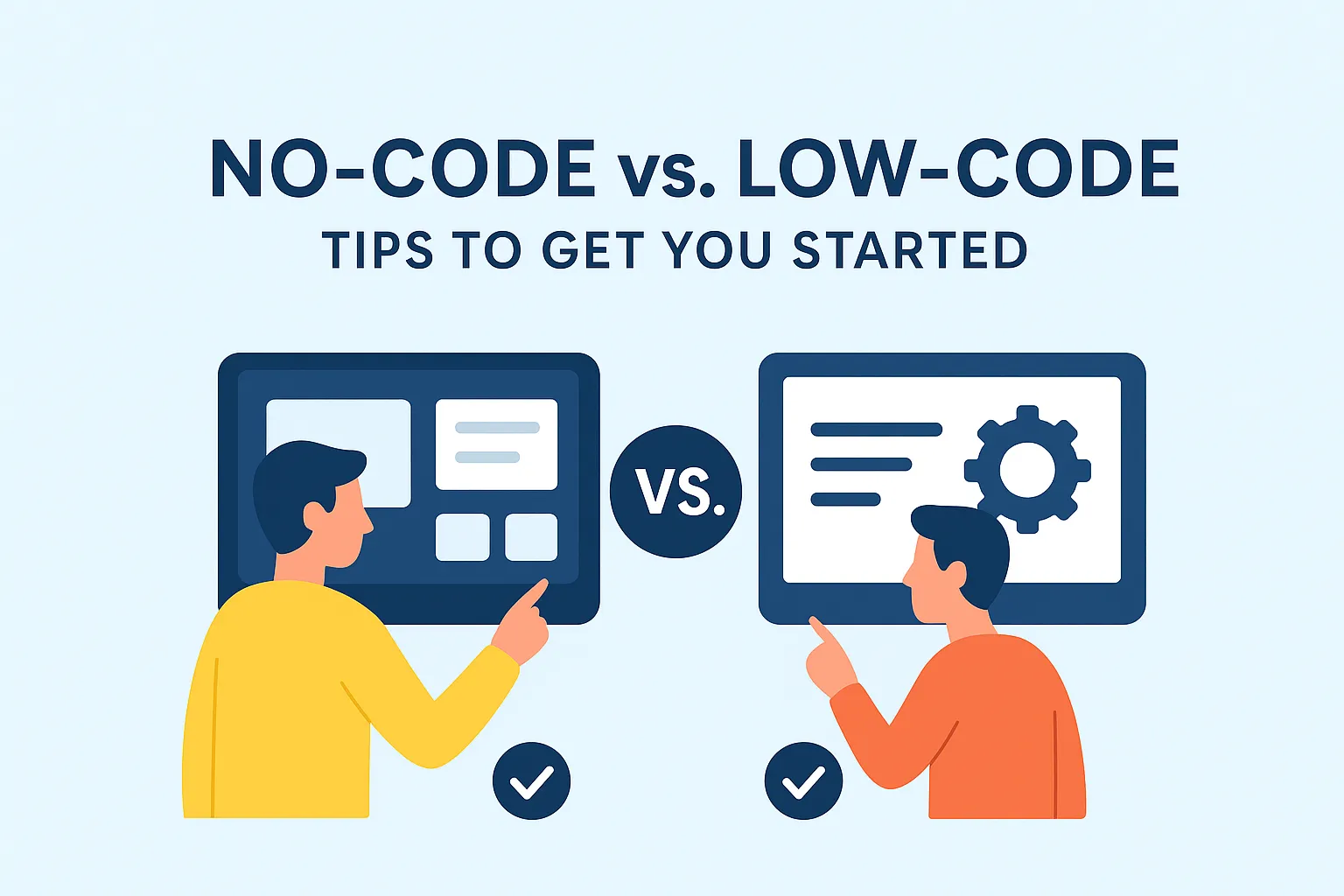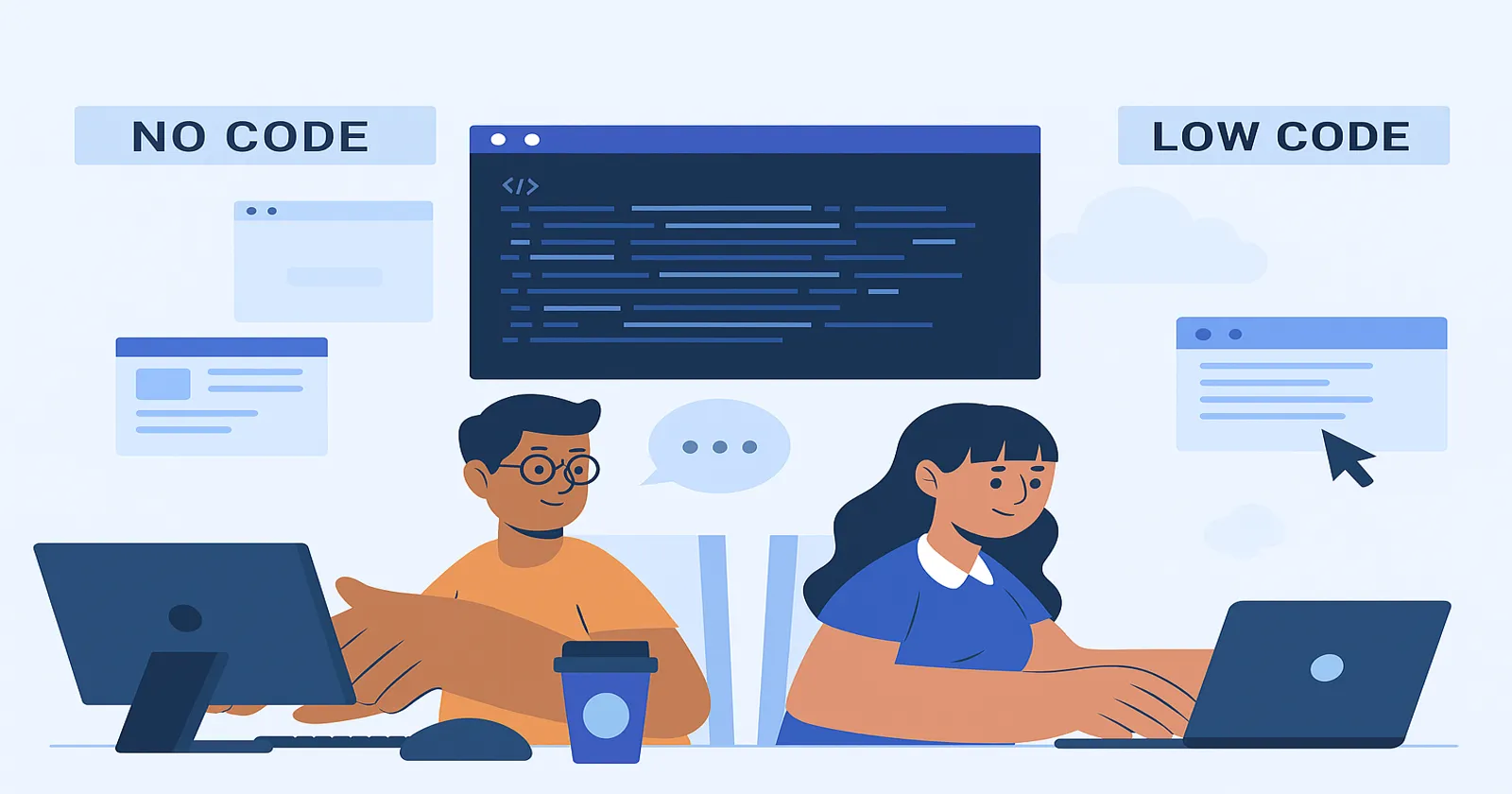In today’s fast-moving tech world, businesses are looking for ways to build and ship applications faster without any hassle. That’s where low-code and no-code platforms come in. These platforms help us build software with ease, without much coding, so that a person with zero coding knowledge can develop software easily.
If you are someone who wants to build something on your own using low code and no code platforms, this blog is for you. We will see what low-code and no-code platforms are, the difference between these two, and also look at some low-code and no-code platforms.
If you’re curious about how this trend is impacting software testing as well, check out Keploy’s deep dive into the Top 5 Low-Code Test Automation Frameworks in 2025.
What is Low-Code?

Low-code development platforms help users create applications using a visual interface. But here is the catch in low-code, you have to write minimal hand coding for creating the software. Also, most of the backend logic, UI components, and deployment scripts will be prebuilt. You don’t have to spend much time on these components; you can just use all these whenever you need.
Note: But remember, in low-code there will be minimal coding. Also, if you want to change something for your use case, you still have the flexibility to do it.
Examples of Low-Code Platforms
Some popular low-code platforms you might have heard of are:
-
OutSystems – Often used by enterprises to build mobile and web apps.
-
Mendix – Focuses on collaborative app development.
-
Microsoft Power Apps – Lets businesses build custom apps connected to their Microsoft services.
-
Appian – Known for workflow automation with a low-code approach.
What is No-Code?

No-code development platforms help users create applications without coding. Yes, you heard it right creating software applications without writing a single line of code. Everything is built visually, and other components are prebuilt. Our job is to just use it whenever we need that’s it. No-code platforms help both developers and also non-developers like marketers, product managers, or entrepreneurs who want to build prototypes or functional applications.
Examples of No-Code Platforms
Here are a few no-code tools that many people use today:
-
Keploy – Great for writing Automated test cases.
-
Webflow – Great for designing and launching responsive websites without coding.
-
Airtable – A spreadsheet-database hybrid for building mini-apps and managing data.
-
Bubble – Allows users to build fully functional web apps without code.
-
Zapier – Automates tasks by connecting different apps and services.
Low-Code vs. No-Code
| Feature | Low-Code | No-Code |
|---|---|---|
| Target Audience | Developers/IT Teams | Business Users/Non-Tech Roles |
| Customization | High (can write code) | Limited (prebuilt components) |
| Speed | Fast | Very Fast |
| Flexibility | High | Moderate |
| Learning Curve | Low to Moderate | Very Low |
Benefits of Using Low-Code and No-Code Tools
-
Faster Development
We can build and deploy applications in days/hours instead of weeks or months.
-
Cost-Effective
It reduces the need for large development teams and cuts outsourcing costs.
-
Accessible to Non-Developers
It helps non-developers build their own tools and workflows.
-
Increased Productivity
Free up developers to focus on complex problems while routine tasks or repeated tasks get automated.
-
Rapid Prototyping
It’s really useful to build MVPs and POC projects without heavy investment.
When to Choose Low-Code/No-Code vs. Full-Code
-
Go with No-Code:
If you’re a developer, startup founder, marketer, or ops person looking to build a simple internal tool or MVP, or want to automate processes and some repetitive tasks, you can use no-code platforms. It saves a lot of time.
-
Choose Low-Code:
If you are a person who needs more flexibility or wants to integrate with existing systems but still wants to move fast, you can use low-code platforms. Remember, in low-code, we have to write minimal code.
-
Use Full-Code:
I hope everyone is already using full code. Choose full code for highly customized, performance-critical, or large-scale applications that require fine-grained control.
Every approach has its advantages and disadvantages. Choose based on your use cases and your current goals and resources.
How Keploy’s No-Code Platform Helps Us Test Our Applications??

Keploy helps you test applications even without writing a single line of code yes, you heard it right. If you are looking for some no-code platforms that help automate Unit Testing, Integration Testing, and API Testing, this tool has you covered. It generates test cases and data mocks/stubs from user traffic by recording API calls and DB queries, significantly speeding up releases and enhancing reliability. For integration testing, it also helps to mock the databases.
For API and Unit Testing, AI is leveraged to automatically create test cases. Once generated, the system also verifies the accuracy of these test cases. There’s no need to worry about any of this it’s all handled for you. Our job is simply to enjoy a coffee while the tests run on the platform.
If you want to know more: Check out here
Want to know more? Check it out here.
No-Code vs. Low-Code: Tips to Get You Started

-
Start small
Start using platforms for your side project. Get familiar with these tools.
-
Choose the right platform
Pick one that fits your use case and comfort level. If you are looking for a solution in testing, you can try Keploy. Choose the right platform based on your use case.
-
Experiment
There are so many tools. Start experimenting with all of those tools so that we will get an idea of how other tools work and also make it easier for us to choose which one is best.
Conclusion
Low-code and no-code platforms are not just a trend they’re really reshaping how we build software. They help everyone build software quickly and easily without spending much time. There are so many no-code and low-code development platforms that help people ship software. One great example is Keploy, a no-code platform for creating test cases. Keploy is a no-code platform in the testing domain; likewise, there are other tools in different domains.
FAQs
-
What’s the main difference between low-code and no-code?
Low-code still needs some coding knowledge, mainly for custom features, while no-code requires zero coding and uses only visual tools. No-code is generally best if you don’t want to write complex logic; low-code handles more complex needs.
-
Are low-code and no-code tools secure?
Most reputable platforms take security seriously and follow industry standards. However, for highly sensitive data or strict compliance, it’s important to check the platform’s security certifications and have your IT team involved.
-
Can I build a complex app using no-code tools?
No-code tools work best for simple to moderately complex apps. If your app needs advanced logic, heavy integrations, or custom backend processes, you might hit limitations and need to switch to low-code or full-code development.
-
Do I need any training to use these platforms?
Basic training helps! Many platforms offer tutorials, community forums, and templates. While no-code tools are beginner-friendly, low-code platforms may require understanding simple programming concepts.
-
Will low-code and no-code replace traditional developers?
Not entirely. These tools help speed up development and make simple tasks accessible to non-developers. However, for large-scale, mission-critical, or highly customized software, skilled developers are still irreplaceable.
-
Is Keploy a low-code platform or no-code platform?
Keploy is a no-code platform.
-
How to Try Keploy’s API Testing Platform?
Keploy’s no-code API testing platform is free to try. Visit: app.keploy.io and try it for one of your applications.


Leave a Reply